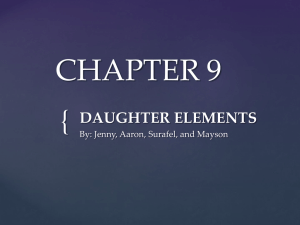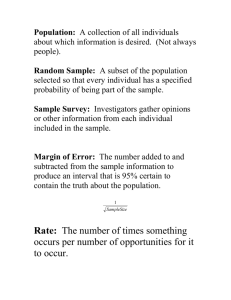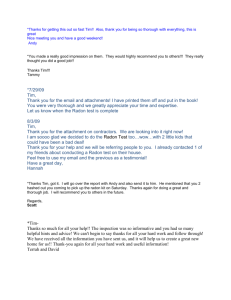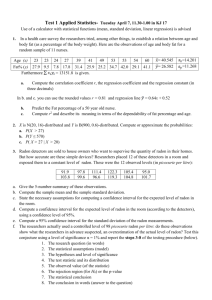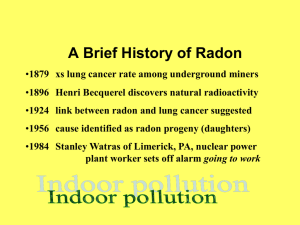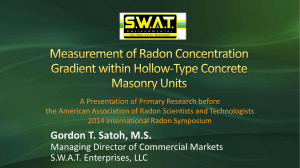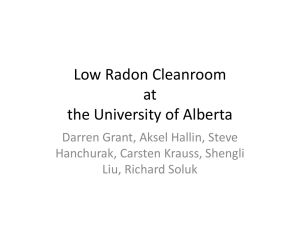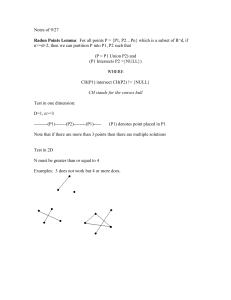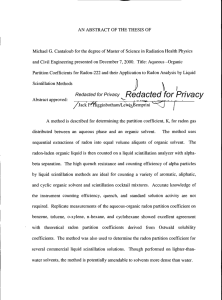High Sensitivity radon measurement to distinguish between
advertisement
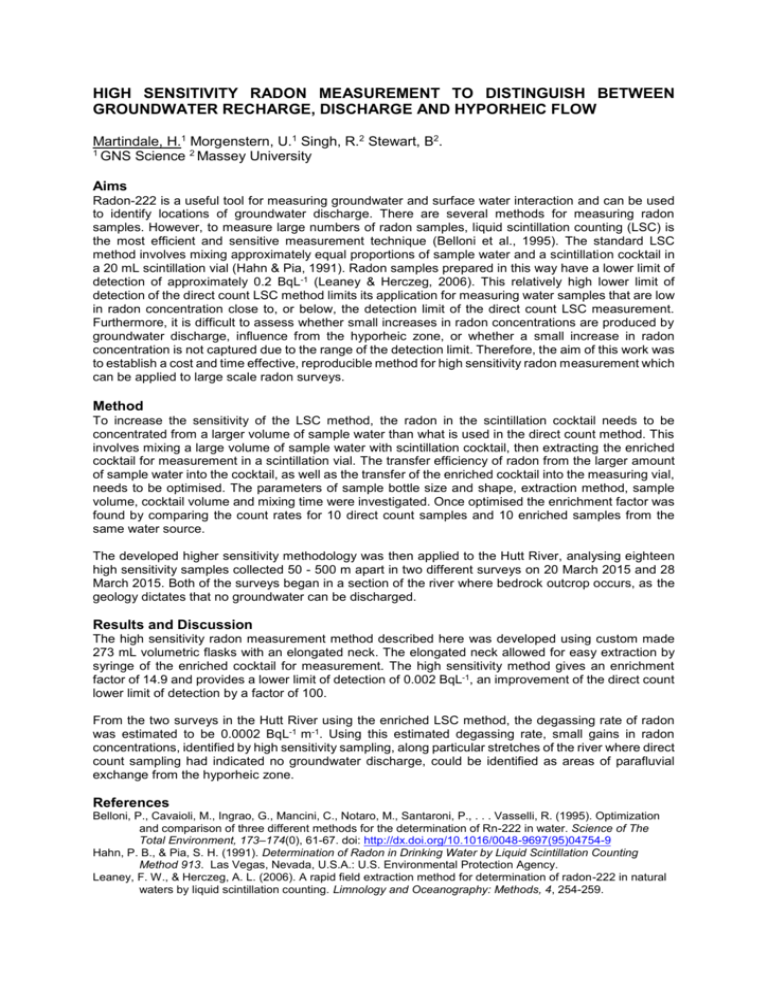
HIGH SENSITIVITY RADON MEASUREMENT TO DISTINGUISH BETWEEN GROUNDWATER RECHARGE, DISCHARGE AND HYPORHEIC FLOW Martindale, H.1 Morgenstern, U.1 Singh, R.2 Stewart, B2. 1 GNS Science 2 Massey University Aims Radon-222 is a useful tool for measuring groundwater and surface water interaction and can be used to identify locations of groundwater discharge. There are several methods for measuring radon samples. However, to measure large numbers of radon samples, liquid scintillation counting (LSC) is the most efficient and sensitive measurement technique (Belloni et al., 1995). The standard LSC method involves mixing approximately equal proportions of sample water and a scintillation cocktail in a 20 mL scintillation vial (Hahn & Pia, 1991). Radon samples prepared in this way have a lower limit of detection of approximately 0.2 BqL-1 (Leaney & Herczeg, 2006). This relatively high lower limit of detection of the direct count LSC method limits its application for measuring water samples that are low in radon concentration close to, or below, the detection limit of the direct count LSC measurement. Furthermore, it is difficult to assess whether small increases in radon concentrations are produced by groundwater discharge, influence from the hyporheic zone, or whether a small increase in radon concentration is not captured due to the range of the detection limit. Therefore, the aim of this work was to establish a cost and time effective, reproducible method for high sensitivity radon measurement which can be applied to large scale radon surveys. Method To increase the sensitivity of the LSC method, the radon in the scintillation cocktail needs to be concentrated from a larger volume of sample water than what is used in the direct count method. This involves mixing a large volume of sample water with scintillation cocktail, then extracting the enriched cocktail for measurement in a scintillation vial. The transfer efficiency of radon from the larger amount of sample water into the cocktail, as well as the transfer of the enriched cocktail into the measuring vial, needs to be optimised. The parameters of sample bottle size and shape, extraction method, sample volume, cocktail volume and mixing time were investigated. Once optimised the enrichment factor was found by comparing the count rates for 10 direct count samples and 10 enriched samples from the same water source. The developed higher sensitivity methodology was then applied to the Hutt River, analysing eighteen high sensitivity samples collected 50 - 500 m apart in two different surveys on 20 March 2015 and 28 March 2015. Both of the surveys began in a section of the river where bedrock outcrop occurs, as the geology dictates that no groundwater can be discharged. Results and Discussion The high sensitivity radon measurement method described here was developed using custom made 273 mL volumetric flasks with an elongated neck. The elongated neck allowed for easy extraction by syringe of the enriched cocktail for measurement. The high sensitivity method gives an enrichment factor of 14.9 and provides a lower limit of detection of 0.002 BqL-1, an improvement of the direct count lower limit of detection by a factor of 100. From the two surveys in the Hutt River using the enriched LSC method, the degassing rate of radon was estimated to be 0.0002 BqL-1 m-1. Using this estimated degassing rate, small gains in radon concentrations, identified by high sensitivity sampling, along particular stretches of the river where direct count sampling had indicated no groundwater discharge, could be identified as areas of parafluvial exchange from the hyporheic zone. References Belloni, P., Cavaioli, M., Ingrao, G., Mancini, C., Notaro, M., Santaroni, P., . . . Vasselli, R. (1995). Optimization and comparison of three different methods for the determination of Rn-222 in water. Science of The Total Environment, 173–174(0), 61-67. doi: http://dx.doi.org/10.1016/0048-9697(95)04754-9 Hahn, P. B., & Pia, S. H. (1991). Determination of Radon in Drinking Water by Liquid Scintillation Counting Method 913. Las Vegas, Nevada, U.S.A.: U.S. Environmental Protection Agency. Leaney, F. W., & Herczeg, A. L. (2006). A rapid field extraction method for determination of radon-222 in natural waters by liquid scintillation counting. Limnology and Oceanography: Methods, 4, 254-259.

